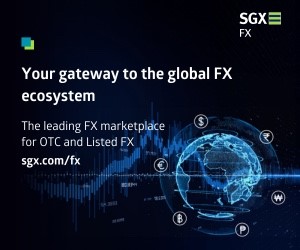The Last Look…
Posted by Colin Lambert. Last updated: February 20, 2024
I wonder if any of those firms that have been granted patents in the FX industry are looking nervously over their shoulder following the judge’s decision in the Oanda/StoneX case?
Patenting technology or processes is a tricky business, especially when it comes to FX because at its core, the question can be asked, ‘where is the real innovation?’ As an old voice broker used to tell dealers any time they started complicating things, spot FX “is two numbers…and they go up and down”. The same can often be said for other products as well.
Innovation over the years in FX has often come from multiple directions, but there are a few that stand out, and generally speaking all have one thing in common – they have been copied pretty quickly. The Reuters Direct Dealing service evolved from the Telex machine; Matching and EBS evolved from voice broking, and then a host of other platforms evolved from those venues as well as from single dealer platforms.
A lot of the data and analytics service available were derived from such aspects of the business as technical analysis – find the old person in the dealing room and ask them about the old charts. Whole walls (and rain forests) were sacrificed in building charts back in the 1980s and 90s – sometimes for dubious returns!
Pricing technology? That isn’t anything new either, for a voice trader would price according to his or her order book or position and the last price. Yes, pricing engines may use the odd extra piece of data, but is the process that different? Look at the product world – Citi’s FX options pricing cube was a great way of minimising screen real estate for FX options pricing, but I had seen it before, at Societe Generale. The Citi version may have been better and work quicker, but the actual process – the thing it did – was no different.
I think it is important that the judge noted that granting such patents could stifle innovation, but it is also vital that good ideas can be improved upon. There is a still a debate in my circles as to whether the first single dealer platform was NatWest’s or Dresdner’s, but with all due respect to those who built them, the limitations of the technology available meant the concept was bound to be improved – as it indeed was, several times over.
Over the 20-plus years I have been looking at the various platforms and services in FX, it is rare that I have been truly bowled over by something truly innovative. There have been plenty of things that have made me sit up because they genuinely improve how something is done, but something radically new? I can only think of two, and both, remarkably came from the same bank that no longer exists.
I republished the story of Clack a few weeks ago as a tribute to the tragic passing of our friend Liam Hudson, and Clack was something that was genuinely different – one could almost say it was nuts – while the other was the algo workbench, which was the first real attempt I saw at pre-trade liquidity analysis. Even here though, Clack evolved into the API, while pre-trade analytics has gone through multiple iterations (I still like the Workbench though!)
There are people that probably wished they had some sort of patent, is there an FX options pricing system that doesn’t look like Fenics for example? (I know there are, don’t write in) The point is, however, that even here, the model has evolved, it is just the look that has largely remained the same.
All this means then, is that the FX industry should be glad that the judge found the way he did because he allows people to take very good ideas and make them great in practice. It is probably the job of people like me, and, perhaps some customers, to rein things in occasionally by saying this idea has been tried before. There is nothing wrong with moving the dial forward, it’s just we perhaps don’t need to listen to all the guff about how innovative the idea is along the way.
Innovation is vitally important to the FX industry, but largely it is about improving existing processes and leveraging the inexorable advance of technology to do things better. In effect, the FX market as we know it today is little different to that of the 1990s, it’s just faster and can handle more data (that is often replicated).
At heart, we can bang on all we like about how great our pricing or execution algos are, but the reality remains, to this day, that FX is still two numbers and, thankfully, they do still go up and down.



